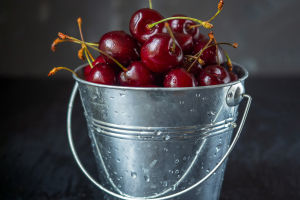As summer temperatures soar, the scorching sun poses many threats to cars exposed to its unforgiving rays.
From paint damage to interior deterioration and safety hazards, the consequences of prolonged sun exposure are far-reaching and potentially costly.
The adverse effects of the summer sun on car exteriors are evident, with paint being particularly vulnerable to its relentless assault. Prolonged exposure accelerates paint aging, causing fading and diminishing the vehicle's overall aesthetic appeal.
The sun's UV rays can wreak havoc on interior surfaces, hastening the degradation of plastics and other materials, leading to deformation and a shortened lifespan.
Beyond cosmetic concerns, the summer sun can also pose safety risks. The heat trapped inside a car can emit harmful gases, posing health hazards to occupants. Additionally, the intense heat can accelerate tire aging, increasing the likelihood of blowouts and spontaneous combustion events and presenting a clear danger to the vehicle and its passengers.
To mitigate these risks and safeguard your vehicle, one of the most effective solutions is the application of window tinting, akin to providing your car with a protective sunscreen. This simple yet effective measure offers many benefits, including insulation, glare reduction, UV protection, and heat reflection.
By creating a barrier between the interior and the scorching sun, window tinting helps reduce the heat entering the vehicle, alleviating the strain on the air conditioning system, improving fuel efficiency, and easing the load on the engine.
High-quality window films not only provide sun protection but also enhance safety. In the event of an accident, they help maintain the integrity of automotive glass, reducing the risk of shattered windows and minimizing potential injuries to occupants.
However, with a wide array of window films available in the market, ranging from a few hundred to several thousand dollars, consumers must discern between quality products and inferior alternatives.
Fortunately, distinguishing between high-grade and low-quality window films is relatively straightforward. Premium window films typically utilize wet glue, requiring water for application, while lower-quality alternatives often employ dry glue.
Authentic window films feature anti-counterfeiting signs that can be removed using alcohol-based liquids, whereas counterfeit products can be identified by their susceptibility to removal with water alone.
While window tinting addresses the vehicle's interior, paint maintenance remains essential for exterior protection. Paint coatings offer a practical solution to prevent paint fading and corrosion from acid rain.
Although the initial cost of paint coating may be higher, it provides long-lasting protection, with durability extending up to a year or more. Alternatively, paint glazing offers a more budget-friendly option, protecting for up to six months.
When opting for paint maintenance, ensuring proper application for optimal effectiveness is essential. Professional sealing glaze application, followed by infrared baking, enhances the strength and durability of the glaze, prolonging its endurance. Additionally, the quality of the glaze product is paramount, with authentic products exhibiting insolubility when tested in water.
Protecting your car from the harsh effects of summer sun exposure is paramount for maintaining its appearance, safety, and longevity.
Investing in window tinting and paint maintenance protects your vehicle from damage and ensures a comfortable and safe driving experience throughout the scorching summer months.


